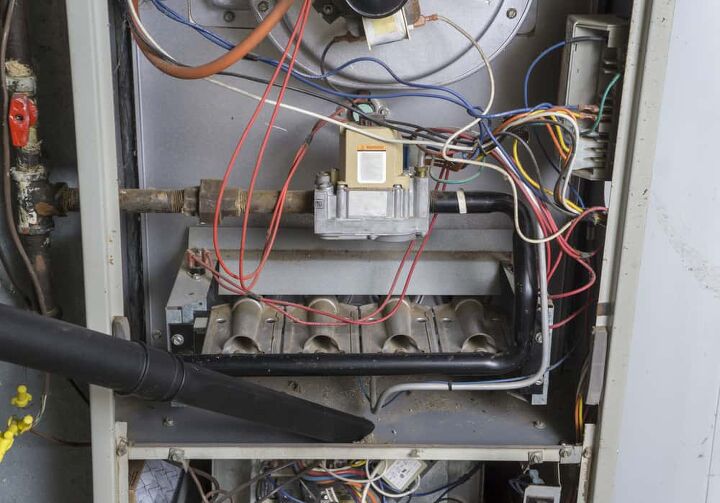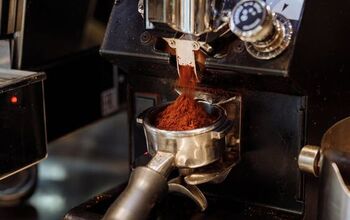Why Is My Forced-Air Furnace So Loud? (Possible Causes & Fixes)

Your furnace can be essential to your way of life, especially in cooler climates. Most furnaces are also known as a forced-air furnace. That’s because they distribute air through the home with air that gets pushed through vents and ducts connected to the heating unit.
Depending on the age and condition of the unit, there is a chance that your unit could be unreasonably loud. It could be due to gaps in the ducts, ducts that are too small, or something known as delayed ignition. Identifying the problem is usually as simple as identifying the noise.
Do You Need Furnace or Heating System Repair?
Get free, zero-commitment quotes from pro contractors near you.

Your Furnace and Noise Levels
There is one point that needs clarifying before we continue. And that is the fact that your furnace will produce some level of noise. Even modern units will produce some sound, though it may not be an unmanageable level of noise.
It is when that noise becomes truly loud and excessive that there can be a concern. Even then, some older furnaces that have simply been around for a long time can have louder noise levels simply through excessive use.
Vibration and Rattling
Identifying the sounds that you are hearing is the quickest and easiest way to narrow down the problem at hand. The good news is that if you are hearing rattling noises emanating from your furnace, the fixes can be relatively simple.
- Add more screws. Screws can pop out from time to time, leaving the ductwork looser than it was originally. Simply replace those screws with new ones to tighten the ductwork. With the ducts now secure, that rattling or vibrating should be reduced or eliminated entirely.
- Use duct tape. Duct tape is a universal tool for holding things together. If the ducts or other components are loose and you don’t have screws available, use some duct tape to secure them into place.
- Cork or rubber pads. If the unit sits directly against the floor, you can also try raising the furnace. Use a pry bar to raise the furnace just enough so that you can slip either cork or rubber pads underneath to provide some separation between the furnace and the flooring.
Whistling Noises
Whistling can be tricky because there are a few different causes for that noise. It isn’t necessarily indicative of a major issue and the noise can wind up being more of an annoyance than anything else. Still, there are a few things to look for.
- Gaps in the duct. When the ducts are not secured together properly, air can get out through those gaps to create the whistling noise that you are hearing. Try to pinpoint where the noise is coming from if you can. More often than not, there will be a small hole at the connecting point between the furnace and the duct that is close to the blower.
- Clogged filter. If that whistling noise is particularly strong or harsh, it could be that your filter is clogged. When the filter gets clogged, the fan sucks in air from wherever it can. Even the smallest of gaps or holes can create a whistle if enough air is getting sucked in. Try pulling the filter out to see if that’s the problem. If that is the case, take the filter out to clean it or replace it entirely.
- Ducts are too small. Lastly, if your ducts are too small, it could be restricting airflow. The furnace may be putting out more airflow than the ducts can handle, and you may need to upgrade your ducts to stop that whistling noise from happening.
Banging Noises at Startup
There may come a time where you hear a banging noise, particularly when the furnace starts up. There are two issues that are most likely. The first is what is known as “oil-canning” which is basically flexing in the ductwork when there are changes in pressure.
The second potential issue is an ignition roll-out. This is when there is a small “explosion” created at ignition. They aren’t major issues but can potentially become one if left unattended.;
- Oil-canning. Should you find that the banging is a result of those changes in pressure, a fix is possible without calling in a professional. Listen to see if the banging is coming from somewhere within the ducts. When oil-canning is the issue, there is a weak spot somewhere in the ducts that requires additional support. Try screwing a thicker piece of metal across the weak spot to provide that additional support.
- Ignition roll-out. This isn’t a common problem, but it is one that can be cause for alarm. When starting up, there is a little explosion, or the flame is slightly bigger than it should be. Start by watching the furnace during startup, leaving the doors on. Watch to see if the doors shake. If they do, open the doors to see if the banging persists.
Should you see an extra flame or some shaking in conjunction with the noise, you can now safely assume that you have a potentially dangerous problem on your hands. Do not attempt to fix the issue yourself; call in an HVAC professional to look at the issue.
Motor Noises
Depending on your level of experience, you may be able to recognize where these noises are emanating from. If you’re certain that the noise is coming from the motor, it could be what is known as “bouncing.”
You can potentially alleviate the bouncing by putting something like Styrofoam underneath the cage. If the bearings get worn out, you may wind up needing an HVAC specialist to come out and take a longer look at the motor.
Buzzing Noises
Like most of the sounds that can create a loud furnace, buzzing has a few potential causes. It could be as simple as loose parts within the unit that can simply be replaced or tightened at your convenience.
Buzzing noises can also be indicative of something like a failing motor. Schedule a diagnostic to have your furnace looked at if it is making noise that you can’t quite put a finger on. A diagnostic will not only identify the problem at hand but could unearth a few potential issues that you may not have even recognized.
Squeaking or Banging When You are Nearby
While there are some pretty common HVAC noises that aren’t much to bat an eye at, you may run into something like squeaking and banging. If you notice these noises when you are walking near the furnace, there are a couple of simple solutions for this issue.
- Reinforce the duct. Sometimes, the ducts can be slightly loose and move around when the furnace is on. That can result in banging or squeaking while the furnace runs. Simply reinforce the ducts when you can, and it should relieve the issue with those noises.
- Re-hang the duct. While loose ducts are the most common culprit for vibrating or shaking, ducts that are too tight can be an issue, too. If you don’t notice any looseness in the ducts, try re-hanging them. It could be helpful to know that you have secured them properly.
- Replace the ducts. You could also try replacing the ducts with Thermo-Pan. Thermo-Pan is a high-quality sheet metal that is used as an alternative for constructing return air ducts. Not only is it better about handling noises, but it is fire resistant as well.
Do You Need Furnace or Heating System Repair?
Get free, zero-commitment quotes from pro contractors near you.

Keep in Mind
When it comes to your furnace, it is important to remember that not every noise is alarming. At the same time, it is important to investigate every noise because it can be potentially alarming. Simply ignoring the noise is the quickest way to find yourself staring down an expensive repair that could have been avoided.
Investigating the issue is something that even the most amateur do-it-yourself types can do but that isn’t necessarily the same for repairs. If you are ever in doubt about a potential issue with your furnace, do not hesitate to call in an HVAC professional. They can ensure that the job gets done correctly and quickly without causing further issues.

Ryan Womeldorf has more than a decade of experience writing. He loves to blog about construction, plumbing, and other home topics. Ryan also loves hockey and a lifelong Buffalo sports fan.
More by Ryan Womeldorf













![Finishing Basement Without Permit [Is It Really Illegal?]](https://cdn-fastly.upgradedhome.com/media/2023/07/31/9070078/finishing-basement-without-permit-is-it-really-illegal.jpg?size=350x220)













